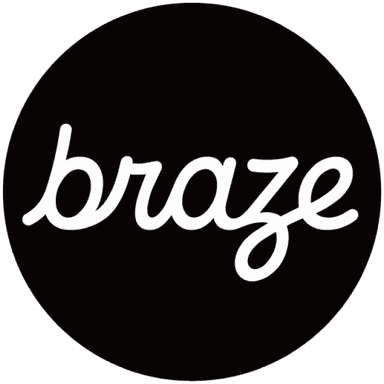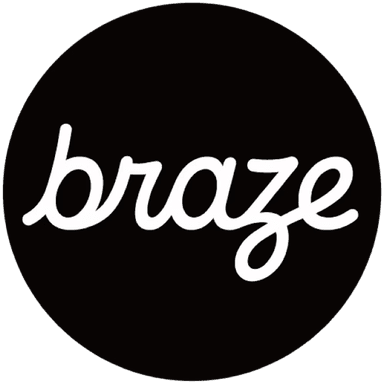What’s the Best Way to Define an Active User?
Published on March 14, 2016/Last edited on January 13, 2025/8 min read


Team Braze
Your brand’s most active users may be hidden from plain sight due to antiquated analytics.
For years, leaders in the digital marketing industry have relied on straightforward metrics like daily or monthly app sessions or website logins to define “active.” But this simple approach to tracking, while easy to monitor and implement, comes with an opportunity cost: by measuring “active use” based on logins only, you risk looking past a level of granularity that can help you develop more compelling, personalized, and impactful marketing campaigns.
You also risk undermining the long-term success of your marketing programs and creating a distorted perspective of ROI and engagement.
Take Twitter, as an example. The company, according to Investopedia, considers a user to be a monthly active user if he or she follows at least 30 accounts, has at least one follow-back, and has logged in within the last month. In Q2 2014, Twitter expanded its definition of an active user to include not only humans but third-party applications that connect with the social network through an API. While the company’s quarterly growth metrics surged and gave analysts a “positive surprise,” according to Business Insider, marketers were left with more questions than answers.
What percentage of growth came from humans vs. machines? What about brands? Are these users completing actions like sharing content, or are they simply logging in? How do levels of activity vary between lurkers and conversationalists?
This begs the question: is it time for brands to redefine what constitutes an active user? Certainly usage patterns in the digital ecosystem have evolved over the last decade, so an evolution in tracking that use makes sense. For instance, Twitter recently changed its “favorites” star symbol to a heart in 2015 and generated a 6% increase to engagement as a result.
It’s important for brands to choose the metrics that best reflect their user engagement goals. Here’s what marketers can do to lead this effort—especially if they don’t have a quantitative background and aren’t sure how to get started.
Step 1: Put yourself in the shoes of your user base
First, turn the tables on your perspective and spend some time in a few of your favorite apps or using your favorite brand’s site (preferably not your own for now), and think about the actions you’re taking to create a positive experience. You’re likely doing some combination of commenting, sharing content, storing information, and making purchases—all actions that demonstrate more substantive levels of engagement than simply logging in a few times a month.
Pay attention to how your user actions vary between brands. For instance, if you’re using Netflix, you might be doing some combination of logging in regularly (maybe a few times per day or per week), watching episodes or movies to the end (as opposed to abandoning them), watching multiple shows in a row, and maintaining your favorites list. If you’re using the Amazon app or website, you’re probably browsing products, adding items to your wishlist and of course, making purchases.
SaaS consultant Lincoln Murphy has crystallized the approach and concept above: the definition of “active” should build upon the value that you’re delivering to your customers—which is why it’s important to understand why your customers use your app and what they’re looking to achieve.
Now it’s time to put your marketing hat back on and to go through the same process with your brand’s app and web properties. Ask yourself the following questions:
- What goals are my users achieving within my app and web properties?
- What steps are they taking to achieve those goals?
- Where do those steps fall in terms of a conversion funnel or customer journey?
Create a list with the answers to these questions. This list will serve as the blueprint for the metrics (and their key performance indicators, or KPIs) that you will use to measure active use for your app and web presence.
Step 2: Find the metrics that relate best to your business goals
From your list, pick 5-7 different ways of measuring active usage that are important to your marketing goals and bottom line. A lower bound of 5 will give you enough substance to allow for a few different business stories that match up with your major business goals. An upper bound of 7 will prevent your list of KPIs from becoming unruly, especially as you get started. If you can only think of 3 or really want to stretch your list to 10; however, give it a go. Just be confident that the metrics you’re choosing reflect the quantitative business story that you want to tell.
It’s nearly impossible to create one uniform, one-size-fits all definition of active, as several groups of users—all valuable to your business in different ways—will have varying levels and types of engagement with your app.
You might even find it useful to frame the way you discuss active users around your business’ internal functions: discuss higher-level metrics with the more senior people in your company, and reserve getting into the details on the more tactical metrics for those on the marketing team who are in the weeds day-to-day.
Here are some vertical-specific examples to get your measurement juices flowing:
- A music service may choose to measure how often user stream songs, in addition to advanced usage like offline plays, creating playlists, and purchase activity.
- A travel company may look for flight search activity within the first few days of a new user acquisition and then examine frequency of purchases over longer periods of time.
- A food delivery service might look for restaurant searches when a new user first joins and then evaluate purchase data and coupon use over time.
Choose metrics that are unique to your business’s bottom line goals. For instance, a company that’s dependent on ad revenue may find that log-in frequency is one of their most important metrics, but numbers of pages read and time on a page plays a role in their active user definition as well.
Need more examples of metrics to evaluate? Here are common stats to track:
- Frequency of log-ins, by type of device and/or platform
- Engagement with content (reads, reads to the end of a page, clicking links within text, pageviews per session, total time reading)
- Sharing of content
- Response to offers, deals, and promotions
- Willingness to share feedback
Step 3: Turn your qualitative stories into a mathematical process
By following steps 1 and 2, you’ll create the foundations you need to quantify the metrics of active use that are relevant to your business—now you can nail down your metrics for defining an active user.
To talk through an example, if pages per session are important, ask yourself: How many pages per session means a user is active? What else are those users doing that’s of value to your business? Someone with tons of pageviews in a session but with only one session (they never came back) of course can’t be called active. Your team will want to answer these questions based on your larger business goals, of course.
First, you’ll need to figure out your technical requirements to determine whether your metric is even possible to quantify (your marketing automation platform can help you determine if there are custom attributes or events you’ll want to track). But don’t let the practical details derail you at the first obstacle. If it’s really important to measure how much time users spend watching a certain animation, maybe it’s time to get your dev team in the room and find out how to measure that.
Two ways to view your data
Once you’ve defined the actions that make a user active, you can take it all a step further and create a composite view of your userbase so that you can objectively rank which groups are more valuable to your marketing strategy than others. A statistical tool called an index can help, and you’ll likely want to loop in your analytics or BI team and someone with a background in statistics to help from here.
In a nutshell, an index is a tool that allows you to combine multiple metrics together into one full perspective. You might recognize the concept from the U.S. News and World Report, which uses the tool to create rankings of colleges. This resource creates a level playing field that incorporates multiple criteria into one quantitative view. If you’re looking to create your own index, follow this step-by-step set of instructions here.
Whether or not you’re doing all this, you can also measure your active user metrics independently. This perspective has the benefit of allowing you to see into the nuances of user engagement more readily–so looking at your data both ways can be beneficial.
You may start to notice that your customers are quite diverse. They might be active in some areas (i.e. engaged with your content) but unengaged in others (i.e. not sharing, even though they’re reading). What’s more, these discoveries can help you market to different types of users.
What to do with all of this info
An incredibly useful application of this active user measurement, aside from seeing if your brand is reaching business goals, is to help you target your marketing campaigns more effectively.
You’ll be better equipped to reach different users across levels of engagement with messaging and campaigns that they’ll respond to, and that will nudge them into more active status, or keep them active. In short, you can build more effective campaigns by targeting customers based on their activity.
Be Absolutely Engaging.™
Sign up for regular updates from Braze.
Related Content
View the Blog
Look out: Outlook's new email requirements and what they mean for Braze senders

Alison Gootee

How the Braze Data Platform enhances flexibility and fosters collaboration

Sahiz Kaur

Customer churn prediction: Using data for smarter retention
